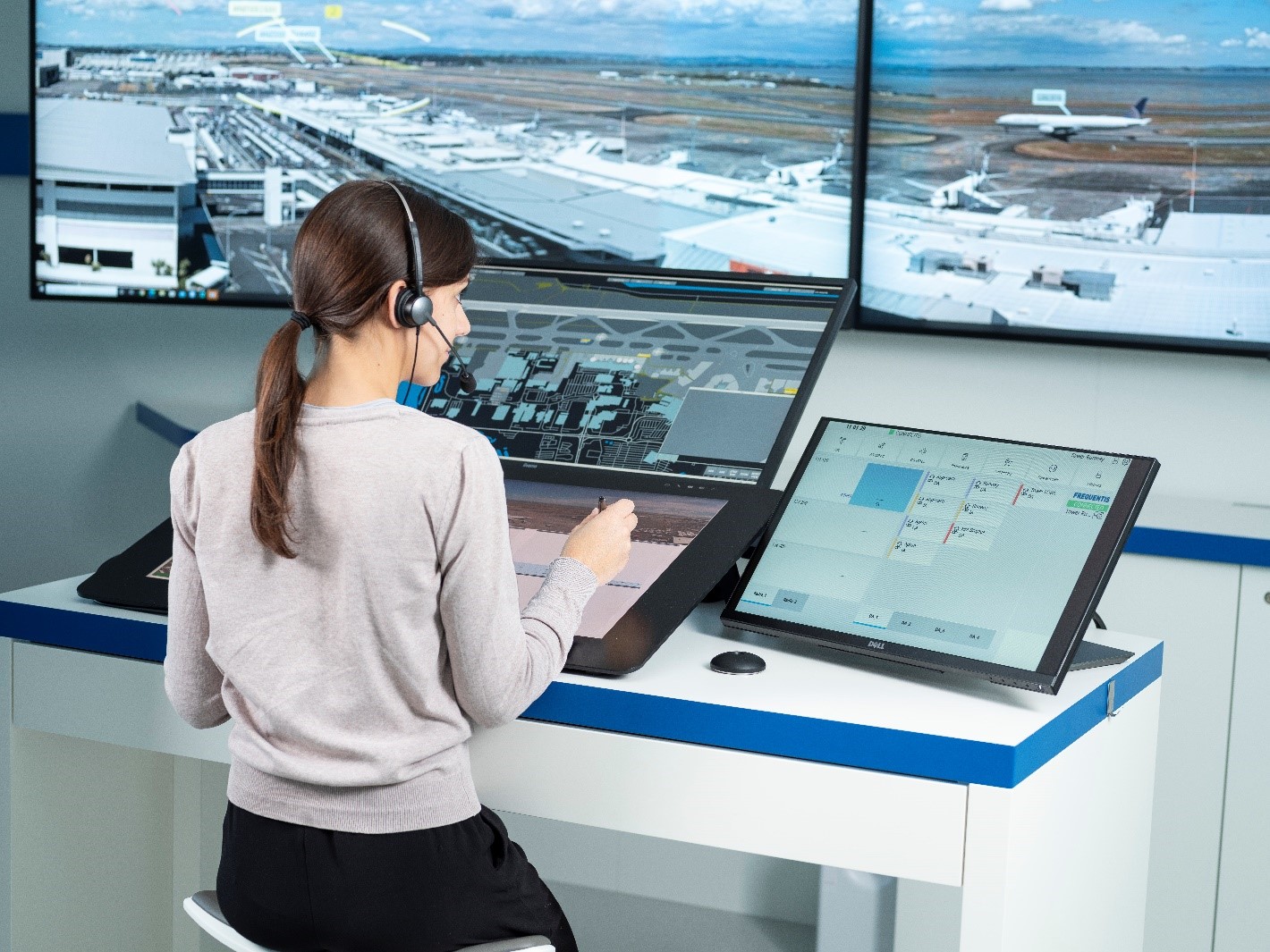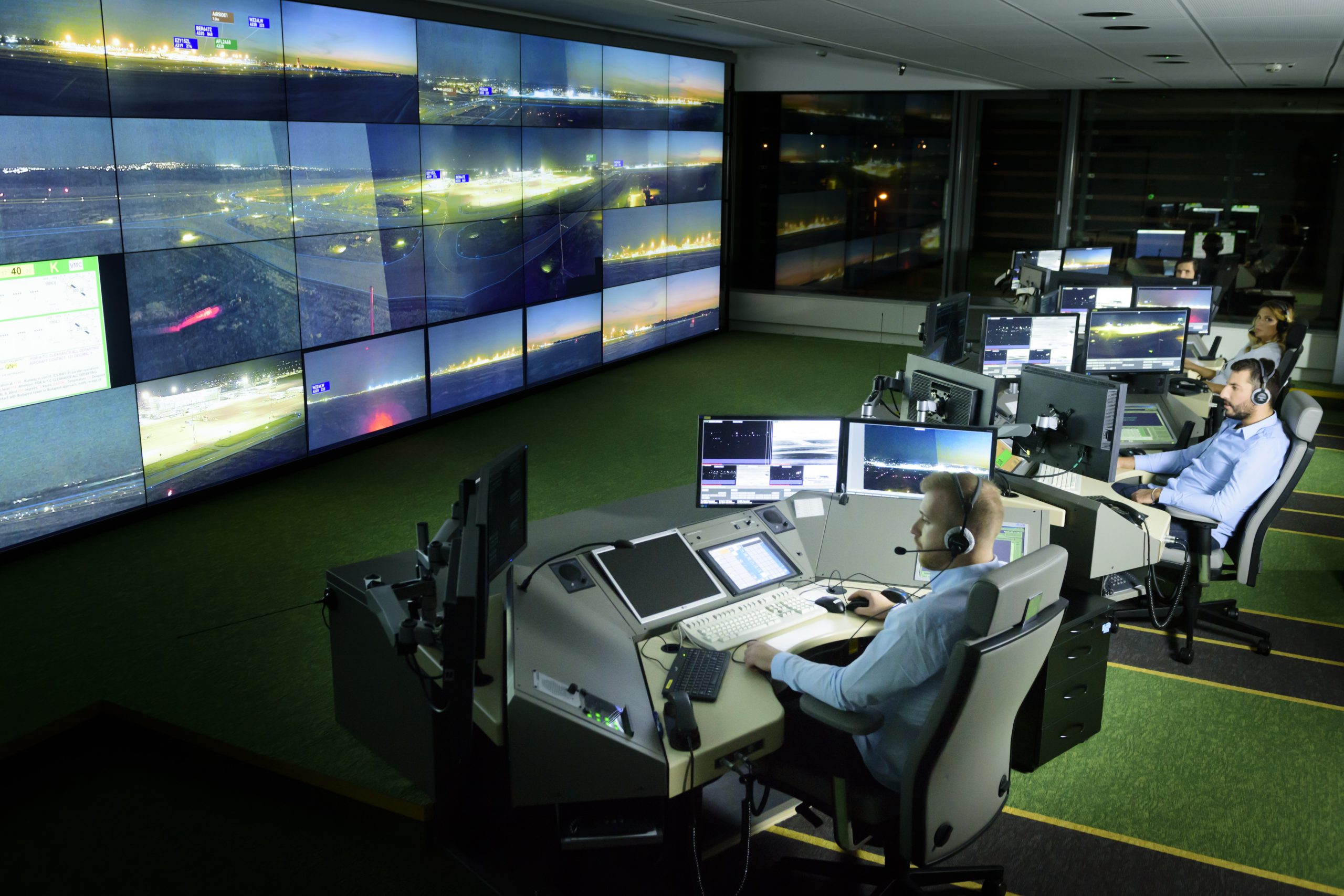Learning lessons to build resilience

Towards the end of 2021, CANSO and EUROCONTROL partnered to present the Global Resilience Summit, sponsored by Aireon. Inspired by the impact of the pandemic on global aviation, the two-day event looked at how organisations across the air traffic management industry could improve their resilience to the threats and challenges such circumstance bring.
CANSO’s Director of Programmes, Michelle Bishop, spoke about the lessons learned during the session, and from management of COVID-19 itself.
The test is still ongoing
This is a crisis that isn’t over. The test is still ongoing and there will be more lessons to be learned before it is over.
So while this may not be the definitive list of lessons learned, they are still worth exploring.
Over the coming days we’ll share those lessons here.
Lesson five – Don’t be so focussed on the lessons we learned that we forget to consider those learned by others, and how they might affect us
We shouldn’t overstate public’s ability on the other side of this pandemic to forget and go back to old ways – but it is pretty clear that society will come out of this pandemic changed.
We have learned new ways of working and we have become comfortable with new tools. And as a result our worlds have both shrunk and grown. That is a point that really resonates with me as I sit in my basement at 4:30 in the morning speaking to hundreds of people around the globe.
It is hard to imagine that business travel hasn’t been forever changed. Before the pandemic we were already seeing increased concern on the part of corporations regarding the environmental impact of their employee travel. It seems likely now that a component of that activity that pivoted successfully online, will stay online. The idea of telework continuing in some permanent form isn’t as novel as it was before. In many regions we’ve seen real estate values in cities fall and rise in the suburbs and small towns as people reconsider their commutes and move further afield. Flying long haul flights to attend a two hour meeting just doesn’t seem as useful as it did before.
Social scientists continue to speculate on the ways society has been altered. Time will tell. But whether we are talking about ‘the great resignation’ or pressures not just for normal, but also for a ‘new normal’, for a recovery that is somehow more socially just, more inclusive and more sustainable, it is undeniable that we are altered by this experience in ways that may still be unclear.
Those societal changes will have implications for our industry and warrant a careful eye. Whether that be increased attention on our environmental footprint and the credibility of our sustainability efforts, or, a seismic shift to a more localised existence that changes our growth pattern assumptions is too early to tell.
And a bonus lesson – Buckle up: the flight is not over and there may be turbulence ahead
And finally, as we talk about lessons learned, we must remember that we have yet to see the end of this crisis. The recovery is fragile, and much is not within our control.
States and public health authorities have worked to enhance early warning systems. Politically no one wants to risk being accused of not acting fast enough, and it is evident that there is a willingness to implement travel restrictions first and figure out the science as to whether there is reason for concern later. Some are starting to suggest that continued mutations and rotating travel restrictions will be with us for some time. The next crisis may not be another 50 or even 20 years in the future, we are one unfortunate mutation away from being back at our worst days.
Therefore, the lesson for now seems to be that we must hope and plan for the best, while continuing to prepare for the worst. We must plan to add back capacity to match traffic growth, we must look to the future needs of our skies, to ways to enhance the sustainability of aviation through efficient operations as we wait for a larger energy transition in our industry away from carbon, we must conquer the challenges of safe integration of new entrants to unlock the significant potential they hold, and we must prepare to manage the growth we still expect to come. But we must do so while staying conscious of the fact that this is not over, and there is an ongoing potential for additional downward shocks and a need to guard and enhance our resilience.
Lesson one – We need to expand our definition of resilience
If there is one single lesson that has been absolutely clear, it is that this crisis must expand our definition of resilience.
Talk of resilience in this industry historically focused on service continuity, technology back-ups, redundancies. We measured how long it took to recover traffic back to normal operations following severe weather events.
But that was when a severe traffic downturn was a 7-12% decline in traffic, and we recovered in 18 months.
But today, two years after COVID-19 started, international passenger kilometers are still down 65% on 2019.
Individual organisations will decide whether this is a “black swan” event or whether this highlights some fundamental fragility of our globalised world. If it is latter that raises the importance of scalability, and that must be the lesson we take in our expanded definition of resilience. A system that is more easily scalable on the upside of traffic growth, and on the downside is critical to our resilience.
Automation, Virtual centres, remote towers, digitalisation, managed services all will have roles.
Lesson two – People matter
This sounds obvious – for all that we are a high tech industry, we deliver our services through people. The investments we make and the attention we give to the health, wellbeing, and skills of our people pay dividends for us.
But the pandemic was different in the ways it impacted people. This was an event that was deeply personal and affected people more broadly and differently than events in the past.
When it was clear in the first quarter of 2020 that COVID was going to be a pandemic with global reach the first action of ANSPs was to take measures to protect the people who deliver the service.
ANSPs implemented sanitation practices and social distancing in the operational facilities. We kept out unnecessary visitors, sequestered staff into teams to reduce the risk of infection spread – both to protect staff and to ensure service continuity. As the months dragged on our attention turned to ways support mental health and ensure skills maintenance after a lengthy period of unprecedented low traffic levels.
Non-operational staff worked from home where they could, and new tools and ways of working were necessary to adjust. Our work became both less and more personal at the same time as we interacted online in a way that invited people into our homes where they sometimes saw our kids and heard our dogs barking.
All of this had really complex impacts on our people.
At various points it might have made them fearful for their health, their industry, their jobs, their colleagues’ jobs, their family. It changed their work/life balance in complex ways, and while it was nice to be able to throw in a load of laundry in between meetings, but in other ways burnout was a real risk.
We have reason to be proud of the resilience our people showed, and the open sharing of experiences and best practices demonstrated by our organisations. We kept the skies open and safe during an uncertain time while our own people were being as personally affected by the pandemic as the public they serve.
It is clear that we must support the health and wellbeing of our people, and there are many practical lessons for how we do that as well as how we manage, recruit and retain personnel, and how we support the development and retention of their skills, and their personal resilience.
We have strong learning cultures – the training involved in being an ATCO ensures that we self select for that. I simply loved a quote from Kath Bishop (one of the speakers at the Summit). She said: “Being world class at improving gives you the best chance at winning”. It is clear that the learning culture that we already have can be leveraged in service of our resilience.
The other critical people aspect that I would be remiss not to talk about, which hasn’t had as much attention, is the end user of our industry’s services, the consumer. They will drive the recovery. Their continued desire to travel, and their willingness to come back on board the aircraft are essential to the whole ecosystem. While initial concerns the public may have had over infection risk from sitting elbow to elbow on board aircraft have been appeased by science, confusing rules, expensive testing, inflexible quarantine requirements, and the uncertainty and ever-changing nature of it all are continuing to dampen recovery.
Therefore our continued partnership with others in the industry to advocate loudly for clear rules, mutual recognition of credentials and other reasonable and implementable ways to make the travel experience better are not wasted efforts. They are absolutely critical.
Lesson three – Coordination is important, but hard
There have been a lot of success stories about how the industry collaborated and how states have worked together to put in place safe travel corridors or have agreed on mutual recognition of health credentials.
But let’s face it. Coordination is hard. And it was greatly complicated by the fast-moving nature of this pandemic and the evolving science and epidemiological situation.
Time and time again, travel restrictions have been announced with short notice, stories have emerged of travellers being stranded or slapped with testing or quarantine requirements they hadn’t expected. Airlines have added capacity to the system, only to withdraw it again as travel dates get closer, making it difficult for the rest of the ecosystem to plan. At one point in the past year the chances of an international flight booked two weeks out being cancelled before departure was one in five.
The WHO can repeatedly advise against blanket travel bans and call for an evidence based, coordinated risk-based approach, as they did again just recently. States can make declarations at high level international meetings which contain all the nice words, but knee jerk measures still abound.
In part that is because those measures make people look like they are doing something, when they can’t do much. But we must recognise that it is also in part because, despite all the talk of “listen to the science”, public polling has demonstrated that there is a higher level of public support for travel restrictions than for mask mandates. Yes people are negatively impacted by travel restrictions, but there is an inherent PR problem when only five to ten per cent of the world’s population flies in any given year.
Within aviation we have always coordinated, in a way that is both art and science. The system doesn’t work unless we do. During the pandemic that was on display despite our difficulties – airlines rallied to provide repatriation flights, to shift passenger capacity to cargo, ANSPs collaborated to improve traffic flows, to provide more efficient routings enabled by low traffic, to share best practice and tools. Regulators issued new rules at pace as the situation evolved. Airports shifted to touchless processes and reconfigured terminals to accommodate new screening requirements. As recovery progressed collaborative forums kept us all updated on a daily basis on what to expect. There have been difficulties, particularly due to the complexity of new passenger screening procedures, but overall capacity has been brought back, in line with demand.
But it is hard here too. And there have been deep cracks in our coordination as the pandemic has shaken the foundations of our organisations. It will be critical that our industry’s record for coordination hold as we move forward.
Whichever traffic projection is right and whether we return to 2019 levels in 2024 or 2027 we will emerge collectively more indebted, with an infrastructure modernization deficit to address. With the challenges of sustainability and growth still facing us. Coordination and consensus on prioritisation will be critical.
Lesson four – Not everyone’s experience is the same
An old saying that was common in my day was: “We are all in the same boat”. That has been altered in recent years to the more insightful: “We are all in the same storm, but in different boats”, and that’s in recognition of the fact that people’s experiences can be vastly different. Some are weathering this storm in a yacht, others in a rowboat. As we look to all the lessons it important to remember that this was not the same experience for everyone.
I don’t just mean that the personal quarantine experience for the family home schooling kids in an inner-city apartment was different than that of celebrities quarantining in mansions with pools and tennis courts. This has been a different pandemic in different parts of the world – the death toll, the waves the approach to lockdowns. Even now, some states have reached high levels of vaccination and are embarking on third doses while others are struggling to get access to vaccines for even their essential health workers.
From an aviation perspective, early assumptions that states would open up as infection rates fell were proved wrong as many made the choice to keep their borders closed for long periods of time. Those regions with a strong domestic or regional market fared better than those dependant on international travel.
Even different portions of the aviation industry were affected in vastly different ways.
While passenger travel was devastated, for a time dedicated cargo operators became the busiest operators in the skies, Business aviation has seen a large boom as a certain component of the market has shifted from business class to business jets. Business jet sales are up and US data is showing that business aviation flight hours in 2021 are already well above 2019.
ATM workload as measured in global flights and flight hours is today down only 15 per cent from 2019 although that can range from -40 to 10 depending on where you are talking about. Some ANSPs are emerging laden in debt, while others have barely missed a step and been made financially whole by their states.
Both the experience and the strategies applied to manage through this crisis have varied. We must be conscious of that as we look at broad generalisations about what the lessons were – or who has been the most successful or the most resilient.




